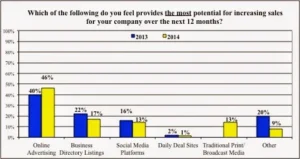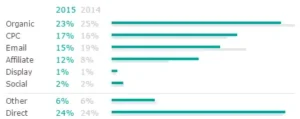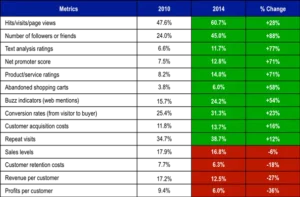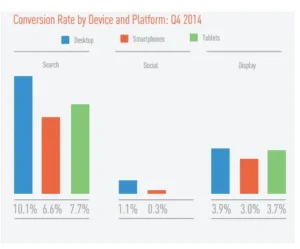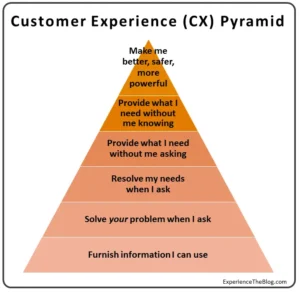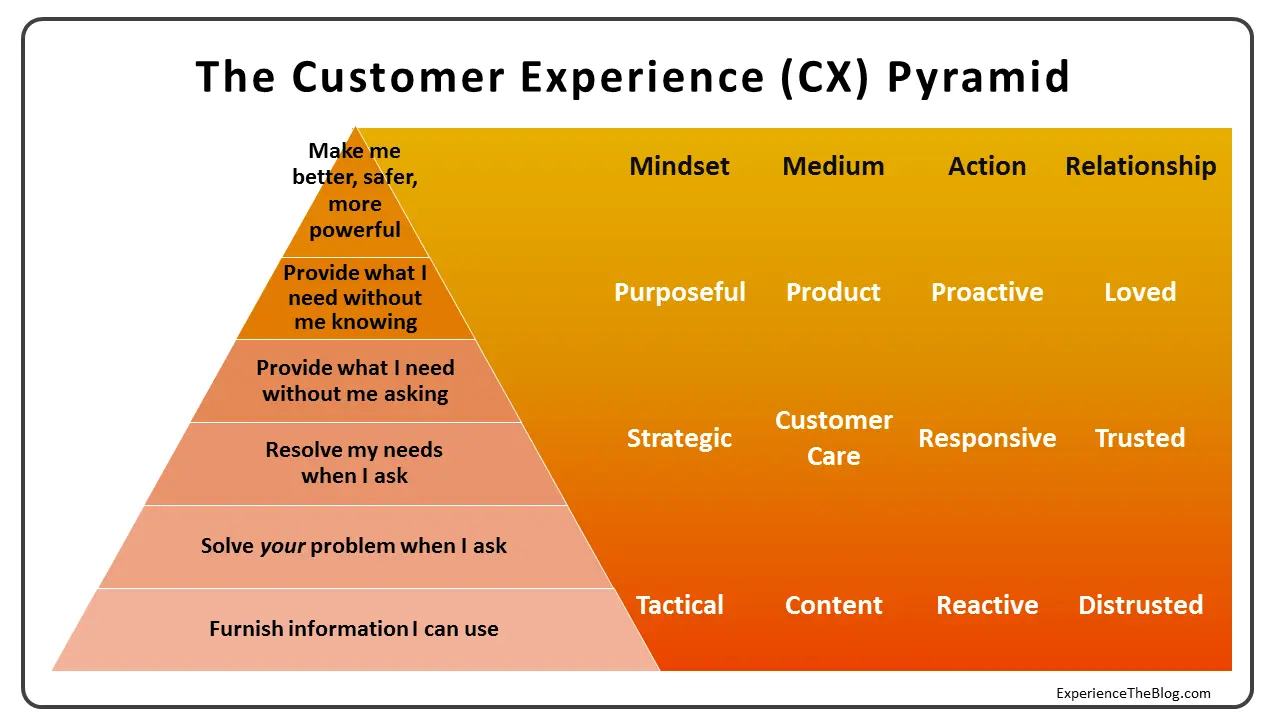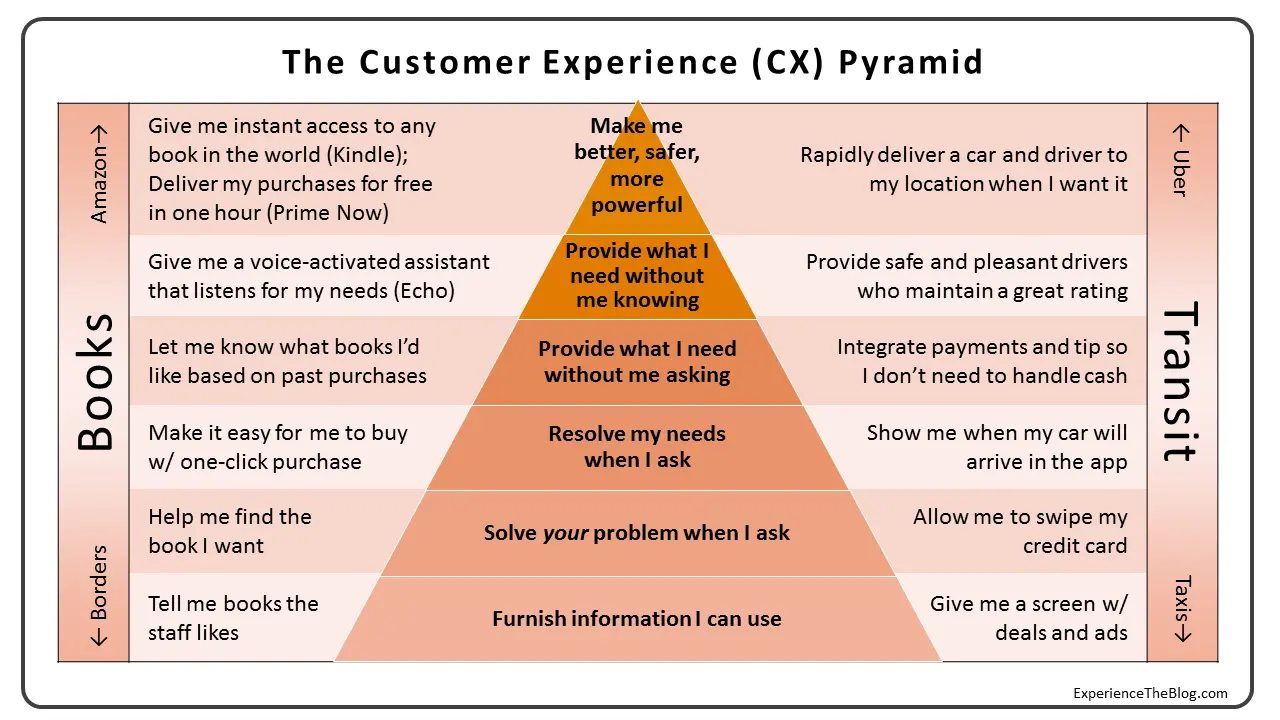
There are times you simply need to destroy what exists in order to replace it with something better. Such is the case for social media. The past seven years have been so full of mistaken beliefs, poor assumptions and outright misinformation that the time has come to reassess completely what social media is, how it works, how consumers use it and what it means for brands.
The fact is that much of the social media dogma we take as gospel has been wrong from the start. As a result, brands are wasting good money to chase irrelevant or even damaging social media outcomes, and the required improvements are not minor adjustments. In many cases, the wrong departments have hired the wrong people to do the wrong things evaluated with the wrong measures.
Together we will burn social media to the ground and rebuild it from scratch. We will do this with data. Data will provide the spark and accelerant that destroys today’s social media strategies, and data will also be the bricks and mortar to build a credible and accurate understanding of consumers’ social behaviors and the legitimate opportunities available to business.
DESTROYING SOCIAL MEDIA MARKETING MYTHS WITH DATA
Every social media marketer and pundit knows case studies that tease the promise of organic content success. They share and reference the same ones time and again, building false hope that marketers’ next social campaign will be Oreo Dunk, #LikeAGirl or Real Beauty. But tear yourself away from the rare and apocryphal stories of success and focus instead on broad, unbiased data, and a different picture emerges.
“Organic social media stopped working.” Those words are from the latest Forrester report, “It’s Time to Separate the ‘Social’ From the ‘Media.'” This is the same Forrester that in the 1990s counseled IT leaders to pay attention to “Social Computing” and whose 2008 book, Groundswell, introduced many business executives to the ways social media was changing consumers and the marketplace. Today, Forrester is again ahead of the curve, making the case that brand organic opportunities have disappeared and social media marketing has become entirely a paid game. As a result, the research firm recommends that marketing leaders assign their social budgets not to the social team but the media team because, as Forrester notes, “Social ads aren’t social; they’re just ads.”
The report states a simple fact that too many content marketers ignore in 2015: “If you can’t get a message to your audience, you can’t very well market to them” Facebook reach for top brands’ posts was just 2% of their fans in 2014, and that number will only decrease further this year.
Evidence of social media’s remarkably poor reach is all around, and many social media marketers are simply ignoring it (or hoping their bosses do). For all of its brand strength, Coca-Cola’s Facebook page this past weekend had a People Talking About This figure–which includes every page like, post like, comment, check-in, share and mention the brand earned in seven days–of just 37,700 people. The world’s largest consumer brand (which sells 1.8 billion drinks a day) on the world’s largest social network (with 1.5 billion monthly active users) engages fewer people in a week than can fit in one MLB stadium–and not even Dodger Stadium but Kansas City’s modest Kauffman Stadium.
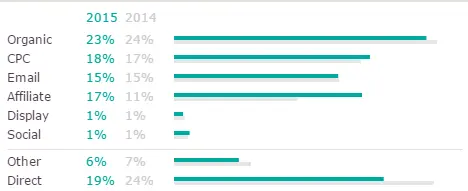
Not only is reach falling but social has never succeeded in delivering reliable marketing scale, no matter how many case studies suggest otherwise. Social does not deliver purchasers (accounting for 1% of e-commerce sales, compared to 16% for email and 17% for CPC). Social delivers poor conversions (with a conversion rate of 1.17% compared to 2.04% for search and 2.18% for email). Social fails to deliver trust (with B2B buyers rating social media posts among the least important for establishing credibility and just 15% of consumers trusting social posts by companies or brands.) Nor is Social media a major factor in search engine rankings (placing dead last among the nine major factors affecting SEO according to MoZ’s 2015 Search Engine Ranking Factors report.)
Rather than hit the brakes, social media marketers are trying to keep their shaky strategies together with wishes and duct tape. For example, marketers are desperately trying to overcome declining organic reach by posting more frequently, but that is not a long-term solution (nor much of a short-term one, either). Another tactic is to chase consumers from one social network to the next for brief windows of organic opportunity. Instagram is the latest social network hyped for delivering higher engagement, but the social platform is busy adding and growing its advertising programs, which means organic reach will rapidly decline on Instagram as it has elsewhere.
Social media marketing has become a house of cards, teetering with lies stacked high since the dawn of the social media era. Entire corporate social media strategies are crafted on baseless assumptions that presume brands can reach prospects and customers in social networks, consumers want and trust brand content, all engagement matters, likes are marketing KPIs and fans and followers are advocates. The best thing social media professionals can do now is to burn down that tower of cards and start from scratch by studying the data, creating new and realistic proof points and producing more effective social media strategies.
BUILDING SOCIAL MEDIA STRATEGIES WITH DATA
Starting from square one, please allow me to introduce you to social media and the opportunities available to your company, one fact at a time:
FACT: People take social media seriously, and so should business.
The numbers are impressive–1.5 billion people use Facebook, 316 million use Twitter, 300 million Instagram and 200 million are on Snapchat. And social media behavior is still growing, with the average usage time rising from 1.66 hours per day in 2013 to 1.72 hours last year. Despite some spurious headlines suggesting Facebook’s demise, that social network continues to dominate, with 59% of users accessing the social network two or more times a day (which is two-thirds more than Snapchat or Twitter and 1000% more than Pinterest). What these data points tell us is that social media is important to consumers, and brands should find ways to meet consumers’ needs and expectations in the channel. While numbers like these typically tempt marketers into believing social media is a fertile content marketing opportunity, this is not the case because…
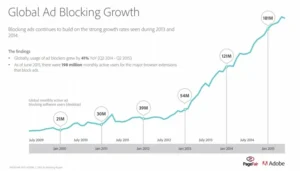
FACT: Consumers work hard to block and ignore brand messaging.
Use of adblocking software is on the rise in 2015, having gone up by 41% since last year. Of people who view time-shifted TV, 37% do so because it permits them to skip ads, and 56% skip every commercial when viewing from a DVR. Of those who have seen online pre-roll ads, 94% have skipped them. And 57% of consumers are actively taking steps to avoid brands that bombard them with irrelevant communications, with 69% having unfollowed brands on social channels, closed accounts and cancelled subscriptions. The reason people do this is that…
FACT: Consumers do not trust brand content.
In the latest Edelman Trust Barometer Study, the majority of countries now sit below 50% with regard to trust in business, and this past year trust in business dropped in 16 out of 27 countries. In the US, consumers do not trust text messages, social media posts or ads from brands. Millennials are an especially tough crowd, with only 1 in 100 saying that a compelling advertisement would make them trust a brand more and they place sales and advertising at the bottom of their trust rankings. So, if organic reach is continually declining toward zero and consumers do not welcome or trust brand messaging, should brands abandon their social profiles? Of course not, because…
FACT: Consumers count on brands to be present in social media, particularly on Facebook.
Consumers indicate they expect brands to be available in an average of 3.5 social media channels, and around 80% of consumers expect brands to be present on Facebook. But if we have established consumers do not want or trust brand messaging in social media (or pretty much any other channel), why do consumers want brands on social networks? It isn’t for brands to fill their news feeds with a stream of promotional messaging but…
FACT: Consumers expect brands to engage on consumers’ terms.
62% of Millennials say that if a brand engages with them on social networks, they are more likely to become a loyal customer. It is not as if brands have no opportunity to listen and engage with consumers one-to-one, considering nearly 50% of people have used social media to praise or complain about a brand in the past month. On the B2B side, 75% of B2B buyers want brands to furnish content of “substance,” that helps them to research business ideas, but 93% of brands focus their content on “marketing” their own products and services. Of course, while too many marketers believe broadcasting messages is a way to engage consumers, people do not consider marketing content to be “engagement.” Instead, they want brands to treat them individually, listen and respond. For example…
FACT: Consumers want fast, responsive customer care in social media.
63% expect companies to offer customer service on social media, and one in three social media users prefer to reach out to a brand on social media for customer service. 75% of consumers using social media for customer service expect to hear back in an hour or less; half want a response in real time. But despite the demand for customer care in social media, brands fail to meet expectations; one study found that 33% of consumers who reach out to brands for customer service get no response, while another recent study found four out of five inquiries go unanswered on social media. The stakes are high for brands to get this right. Econsultancy asked consumers how brands performed to resolve recent issues, and of those who said the brand was very ineffective, 46% are still customers (compared to 71% for very effective brands) and 13% shop at the same level (compared to 46% for very effective brands).
FACT: Consumers want to collaborate with brands to develop better products.
42% of Millennials say they are interested in helping companies develop future products and services, and studies have shown, not surprisingly, that customers are more likely to buy products they helped to create. The secret isn’t merely to offer a database into which people can dump their product ideas; once again, people want true bilateral engagement with brands. A recent study of ten co-creation projects found that the largest percentage of participants (28 percent) was driven by curiosity and a desire to learn, and another 26% had an interest in building skills.
FACT: Consumers want brands to stand for something, not simply push products and generate profit.
People want more from brands. Consumers do not see a conflict between businesses being profitable and being good for the world–81% agree that a company can take actions that both increase profits and improve the economic and social conditions in the community where it operates. Edelman’s 2015 Trust Barometer study also found that half of respondents attribute increased trust in business to the fact that a business enabled them to be a more productive member of society. Edelman found the biggest gap between business importance and business performance on 16 trust attributes was not products and services or even purpose–it was integrity and engagement. The Nielsen Global Survey on Corporate Social Responsibility found much the same, with 55% of global online consumers across 60 countries saying they are willing to pay more for products and services provided by companies that are committed to positive social and environmental impact. Millennials have even higher expectations–three-quarters say that it is either fairly or very important that a company gives back to society instead of just making a profit.
FACT: Brands win when they get people talking to each other, not about the brand’s content but about the actual Customer Experience. In the US, 70% of consumers trust brand and product recommendations from friends and family, which is almost 400% greater than the trust they have in brand posts in social media. Millennials do not trust traditional media and advertising, so they look for the opinions of their friends (37%) and parents (36%) before making purchases. However, marketers continue to struggle with Word of Mouth (WOM)–64% of marketing executives indicated that they believe WOM is the most effective form of marketing but only 6% claim to have mastered it.
DOING SOCIAL MEDIA RIGHT
Most companies are doing social wrong and have done it wrong from the beginning. The key to success is to stop most of what today passes for social media strategy and rebuild social plans from the ground up:
- First, create and measure a new definition of WOM. An individual who recommends your brand based on their actual customer experience is gold; a customer who clicks the “heart” button on a pretty photo posted by your brand isn’t even tin (and a like that is bought is a stain on the soul of your brand). Now is the time to recognize that not all consumer interactions are equal and to succeed, brands must generate the WOM that matters–not the activities that are easy to manipulate and tabulate but the ones that are difficult and meaningful. Discard the fake WOM strategies created with brand-to-consumer content broadcasted in social channels and focus on the real WOM forged peer-to-peer with customer stories, recommendations and advocacy. Fake WOM gets people to click “like” on something the brand posted; real WOM gets people to tell others why they should trust, try and buy your product or service.
- Toss out your social media scorecard immediately. The first step to refocus social activities on what matters is to change what is measured. Stop rewarding employees or agencies for generating engagement that fails to deliver business benefit and start measuring what matters–changes in customer loyalty or consideration, positive and authentic Word of Mouth, inbound traffic that converts, quality lead acquisition and customer satisfaction.
- Reconsider what department should lead your social media efforts. Once you have reconsidered the metrics that matter, the next question is who within the organization is best equipped and staffed to deliver on those metrics. If organic social media is not proving an effective marketing channel, should your marketing team be responsible for content creation and managing social media calendars? If one-to-one engagement and responsiveness are the new goals, which department is best staffed to provide what the brand needs and consumers expect in social media? These are vital questions, because whichever department funds and manages social media will expect the outcomes and use the metrics about which they most care. A recent report from Econsultancy makes the case: Among Financial Service firms, just 38% see social media as a channel for retention; the majority sees it geared for acquisition and cross-sell. That means most of these firms are using social media to chase marketing strategies to drive sales (an approach we now know will fail) while the minority have social media strategies designed to improve customer satisfaction, reputation, loyalty and retention–goals generally not associated with Marketing but with Public Relations and Customer Care departments.
- Objectively assess the return your brand generates with content marketing in social channels, and stop what is not working. If you are not today validating positive return on marketing content posted to social channels, you certainly will not do so in the future as organic reach crumbles to nothing. Marketers continue to act as if content marketing is destined to work and they have simply failed yet to find the right content marketing strategy. Data tells us otherwise; customers and prospects inundated with marketing messages, distrustful of brand content and protected behind social paywalls and adblocking software are not interested in or available to your content marketing output. Content is essential and has a place in Marketing strategies, but now is the time to rebalance the investment the brand is making to match the return it receives and can expect.
- Stop talking at consumers and telling them what you want them to hear. Start listening to customers and responding with what they want and need. Your brand’s intent is more evident than your content, and actions speak louder than words. If the best thing your company can think to do with this wonderful one-to-one relationship channel is to talk about itself, you have no right to be disappointed when consumers perceive and punish your company for its self-interest. Brands that win in the social era will not be better at storytelling but in using social media to hear, help, educate, encourage, empower, connect and respond to their customers and prospects as individuals.
- Get social customer care right. There is no excuse for failing to staff a customer care team properly, secure the right social media management platform, listen for customer needs in every appropriate social channel, manage inbound messages, answer every question, address every complaint and help every prospect or customer in a timely manner. Self-service and peer-to-peer support are valuable tools, but they are no substitute for getting responsive one-to-one customer care right in a growing (and very public) channel of preference for many of your customers.
- Get people talking to each other. Your brand is disappearing from consumers’ news feeds (if it has not already), but friends will always see content from the people they know, care and trust. Stop trying to spark engagement using funny, clever, hip, edgy or inspirational content, and stop acting as if authentic peer-to-peer engagement can be bought by paying influencers to tweet about your brand. Find ways to get people talking to each other about their real experiences with your company and its offerings. Engage your happy customers and help them to share their experiences; intercept customers at moments of truth to encourage sharing; build P2P ratings and assistance into every mobile and web experience; connect people to each other in meaningful ways; and more than anything, provide the sorts of product and service experiences people will want to talk about and their friends will find worthy of attention and consideration.
Here is a place to start as you rebuild your company’s social media strategies: If your brand never posted another piece of marketing content to Facebook, Twitter or Instagram, how would you demonstrate your firm’s values in social channels? If the ability to post promotional messages were taken away, what social media strategies would your company execute to create awareness, attention, consideration, trial and loyalty? If you could no longer rely on your brand journalists, paid influencers, social designers and marketing agencies to create content for social channels, what one-to-one, peer-to-peer, responsive, collaborative, integrated, authentic and meaningful strategies would your brand execute? (Why isn’t it doing those things effectively today?)
The question is no longer if the tired, failed strategies of the past seven years will miraculously yield success; it is if your social media leaders are willing to admit the mistakes of the past, throw out what is not working and chart a new course. The data to build practical and potent social media strategies is not hard to find, but it easy to ignore.
The true secret sauce of social media has never been and will never be to get people to share your brand’s latest viral video or inspirational quote on Instagram. The future belongs to brands that follow the lead of companies like Uber, Nest, Square, Apple, JetBlue, Costco, Trader Joe’s and USAA–brands that get people talking to each other about their differentiated products, customer experience, values, innovation or community commitment rather than about their clever social media posts.
Grab the fire extinguisher, build a social media bonfire and start from scratch. Do this now, and 2016 can finally be the year your brand meaningfully succeeds in social media.

